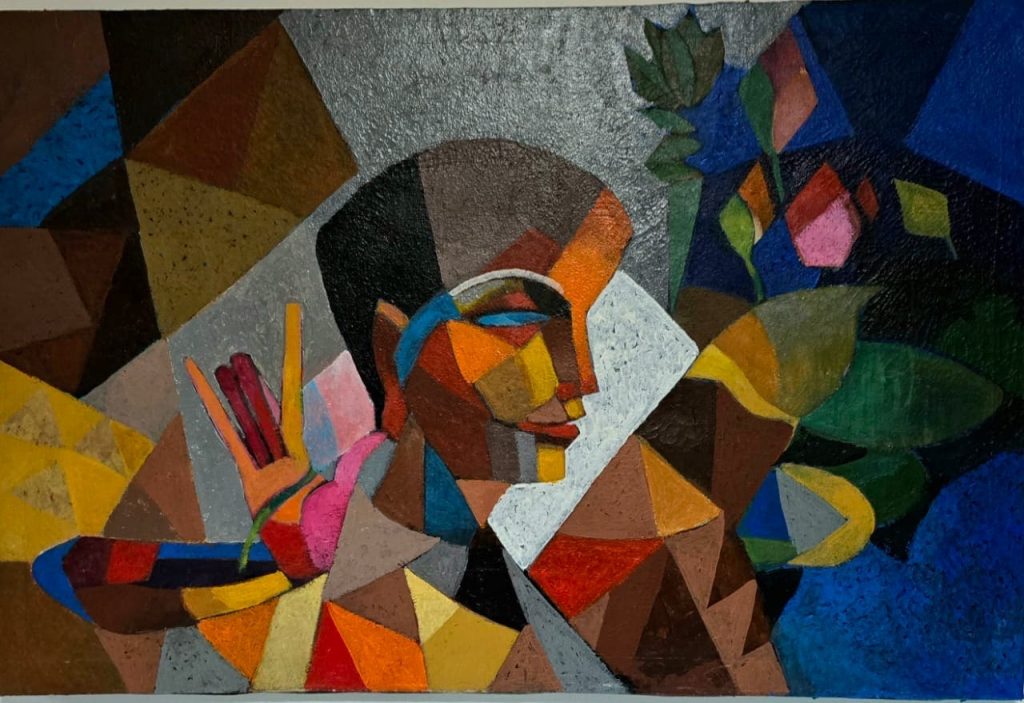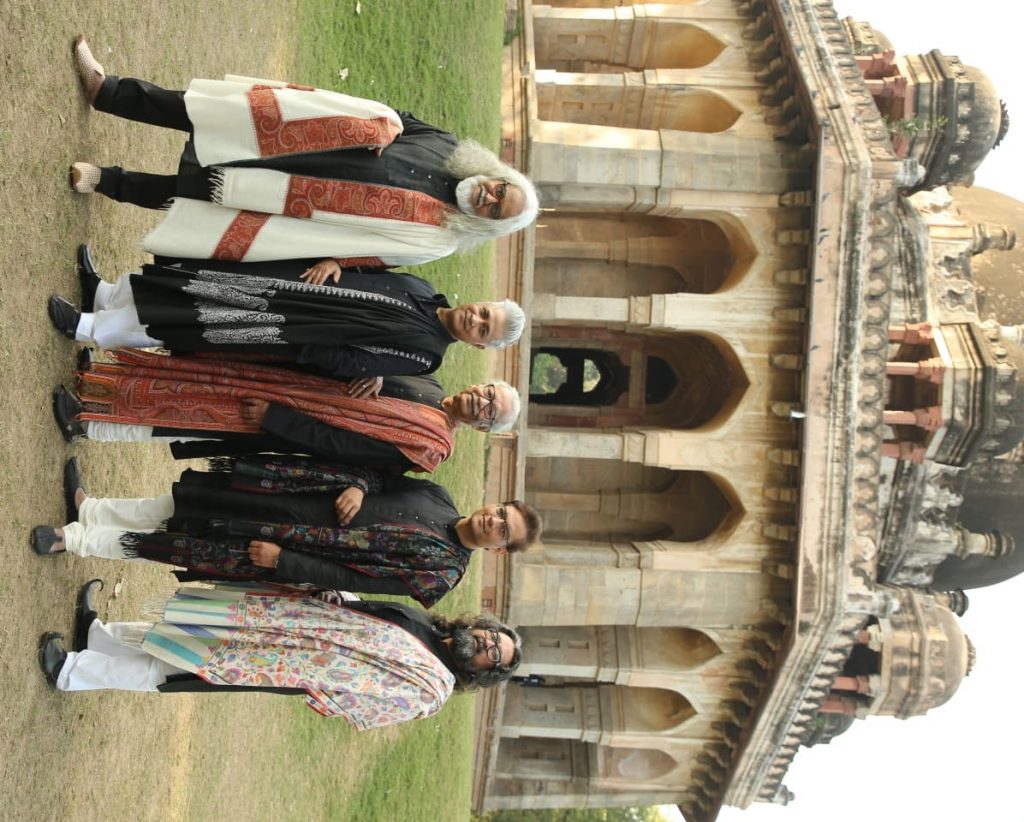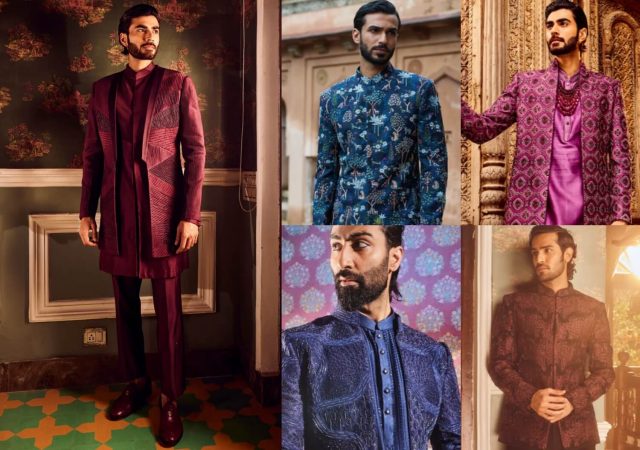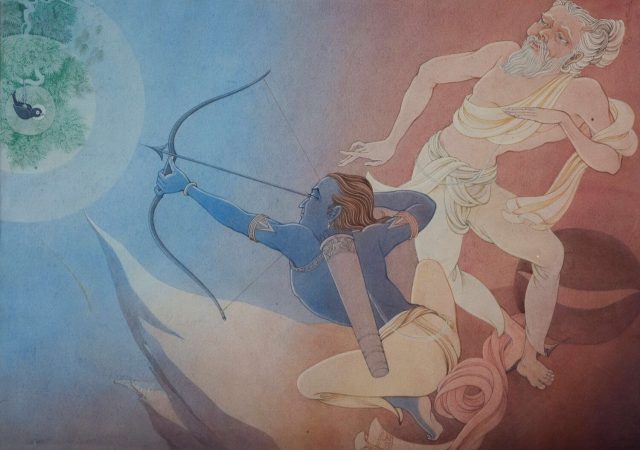Manisha Gawade, a visionary curator and passionate advocate for artistic expression, is set to unveil a tribute to her late mentor, Dr. Alka Raghuvanshi through “The Grand Pashmina Ehsaas 2024,” an online exhibition launching on December 15th, 2024 7:00pm onwards. Through this exhibition, Gawade brings together fifteen renowned visual artists to celebrate and revive the endangered art of Kashmiri Pashmina.
The exhibition will stream on the following platforms and will be on until December 30th, 2024:
https://www.facebook.com/manisha.gawade.927?mibextid=LQQJ4d
https://www.facebook.com/alka.raghuvanshi?mibextid=LQQJ4d
https://www.facebook.com/profile.php?id=100054306049319&mibextid=JRoKGi
https://www.facebook.com/Manisha.gawade.art?mibextid=JRoKGi
The visual artists and important musicians bring out traditional art of Pashmina artistry to the forefront and highlight the need for the karigars and weavers to be brought to center stage. This important move of the painters emphasises our pride in our cultural heritage and the roots of our country. The visual artists will be showcasing their paintings extending their support to the weavers.
The online event will be embellished by soulful compositions by world renowned Sitarist Shubhendra Rao, cellist Saskia Rao and the pride of Kashmir Santoor player Abhay Sapori son of Pt. Bhajan Sapori (Padma Shri awardee) showing their strong support to the cause.
In lines with the ideology of Prime Minister Shri Narendra Modi – Make in India – the exhibition caters to the world, a story that weaves the cultural gravitas of India in the most intricate craft.
Luminaries like Prof. Niren Sengupta, Shridhar Iyer and Niladri Paul, each a titan in their domain, along with sculptor Gagan Vij, Priyendra Shukla, Sonali Durga Chaudhari, Anki Bhutia, Durga Kainthola, Kavita Nayar, Sarla Chandra, Rashmi Khurana, Sonika Agarwal, Artist Subhadra Chaturvedi and Manisha Gawade herself, converge on this digital canvas, celebrating the exquisite craftsmanship and rich heritage of the Kashmiri Pashmina.
On the occasion, Manisha shares her emotions, “If we all don’t wake up now we can loose these works of artistic brilliance forever. Pashminas make up important pieces of heirlooms to be passed onto our generation next. The cycle of poor demand will eventually kill the supplies. The production of these masterpieces has gone down majorly due to many geo-political reasons. It’s our national pride and we as artists wish to highlight this pressing subject to the nation, making them aware of the possible extinction of the Pashmina.”
Ehsaas, born in 2012 from the vision of Manisha Gawade along with sister, late Dr. Alka Raghuvanshi has empowered countless artists and artisans. From dance and music to weaving and sculpting, Ehsaas has united diverse disciplines, providing a platform for their talent to flourish. Notably, Ehsaas spearheaded the first-ever wearable art installation, aptly solidifying its position as a champion of artistic innovation.
About the Pashmina
Pashmina, the “soft gold” of textiles, boasts a lineage as rich as its texture. Derived from the fleece of Changthangi goats, native to the harsh environs of Ladakh, pashmina reflects the resilience of both nature and craftsmanship. Its history, intricately woven like its fabric, dates back to the 15th century, when Sultan Zain-ul-Abidin introduced the art of pashmina embroidery to Kashmir. This legacy flourished under the Mughals, solidifying pashmina’s position as a coveted symbol of luxury and cultural heritage.
In intricate stitches and swirling patterns, Kashmiri Pashmina, lauded by UNESCO, whispers a vibrant history of cultural dialogues that have enriched the region’s artistic landscape. The Silk Roads, those ancient arteries of commerce, left an indelible mark on Kashmiri art, evident in the evolution of pashmina designs and motifs.
“The Grand Pashmina Ehsaas” is a celebration of cultural heritage, a testament to artistic resilience, and a call to action to safeguard the future of Kashmiri pashmina.


















